Image Credit: Eric Thomas and Alexandra Salmon
Image Credit: Eric Thomas and Alexandra Salmon Four inches of extruded polystyrene was installed under the slab, bringing its thermal resistance to R-20. The perimeter of the slab also was insulated with XPS down to 2 ft., the height of the stem wall. The floor radiant system and domestic hot water are served by a UniChiller heat pump, with an electric water heater supplementing the domestic hot water. Structural insulated panels helped bring the exterior walls to R-26 and the roof to R-41.
Eric Thomas and his wife, Alexandra Salmon, have bought into the energy efficiency ethos in a serious but not, in turns out, extremely expensive way.
They purchased an infill lot in Seattle’s Ballard neighborhood for $180,000. By the end of May, work had commenced on what would become their 1,915-sq.-ft. three-bedroom home, whose design, from Zero-Energy Home Plans, was intended to bring the performance of the building close to net zero energy while also minimizing construction costs. A 6.3-kW photovoltaic system was installed on the roof – enough PV to bring the house to net zero energy on an annual basis, according to the project team’s calculations.
Thomas and Salmon ended up spending $417,000, which includes the lot purchase but excludes revised plans and engineering costs, which came to less than $5,000. The couple also will be eligible for a 30% federal tax rebate on the PV installation, which so far has produced a 1,000 kWh power credit for the home that can be drawn on this winter.
Insulation and airtightness
The building is insulated with 4 in. of extruded polystyrene under the slab and with perimeter XPS down to a dept of 2 ft. around the stem wall. The exterior walls are constructed of structural insulated panels (SIPs) and, with all drywall and siding in place, provide R-26 thermal resistance. The roof is built to R-41 with 10.25-in. SIPs. Airsealing was thorough enough to yield only 0.56 air changes per hour at 50 Pascals pressure difference.
Among the other elements key to the performance of the building envelope, says Zero-Energy Home Plans founder Ted Clifton, are its triple-glazed windows, which were made by Vancouver-based Vinyltek using Cardinal LoÄ’-i81 glass. Center-of-glass U-factors are as low as 0.12, with visual transmission of as much as 63% and a solar heat-gain coefficient between 0.15 and 0.51, depending on the orientation of the window. (Of course, the whole-window specifications as shown on the NFRC label are not as impressive as these center-of-glass specs.)
“We are getting very close to being able to put glass wherever we want it, without sacrificing envelope performance,” Clifton wrote in an e-mail to GBA.
A Unico UniChiller air-to-water heat pump helps serve both the radiant in-floor heating system and the domestic hot water system. The latter is supplemented by a standard electric water heater. In Seattle’s marine climate, Clifton says, the entire system operates at a very high net efficiency – a minimum of 212% in winter – even while delivering 120-degree domestic hot water.
Positive airflow (and positive homeowner response)
Air handling devices include a Panasonic motion-sensor bath fan, a Fantech CM3000 high-efficiency particulate air filter (which serves as an air inlet for makeup air distributed to the bedrooms and main living areas while the bath fan is running), and a remote-mounted kitchen range hood fan (rated at 206 cubic feet per minute). Both the range hood fan and bathroom fan are operated with a single control that keeps them synchronized.
Having lived in the house for about three months, Thomas and Salmon say they’ve found little to complain about and plenty to like. Vibration from the heat-pump compressor has been traveling through the pipes, a problem they hope will be reduced with the installation of rubber mountings. But so far, that’s about it for the negatives. They’re far more focused on spreading the word about the energy efficiency of the building and its relatively low construction costs.
“We’re trying to spread the word to our neighbors that net-zero building doesn’t have to cost much more than building to code (and is significantly cheaper over the long run),” Thomas noted in an e-mail to GBA, adding that “we built the house for about the same price as a nearby townhouse on a shared lot that was completed around the same time. That’s not to say that anyone can afford to build a house, but we think our house is evidence that net-zero building doesn’t have to be the purview of rich retired people or newly minted millionaires.”
For more information on this house, see GBA’s case study: A Net-Zero-Energy House for $125 a Square Foot.
Weekly Newsletter
Get building science and energy efficiency advice, plus special offers, in your inbox.

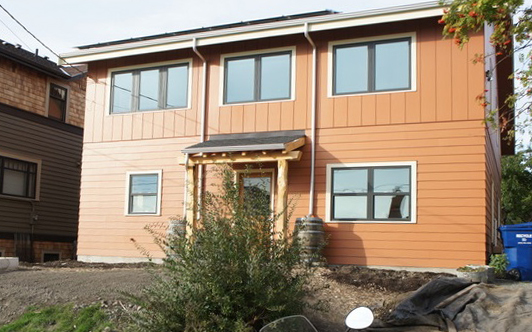




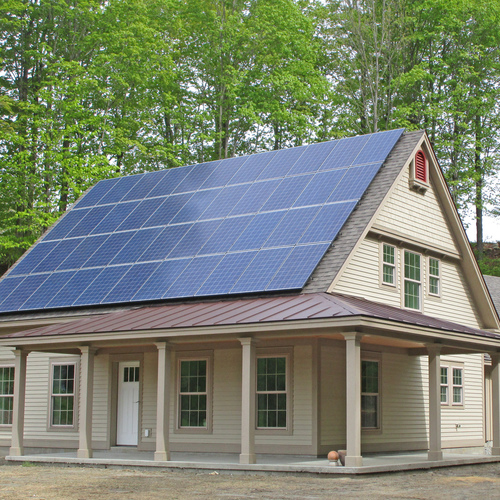
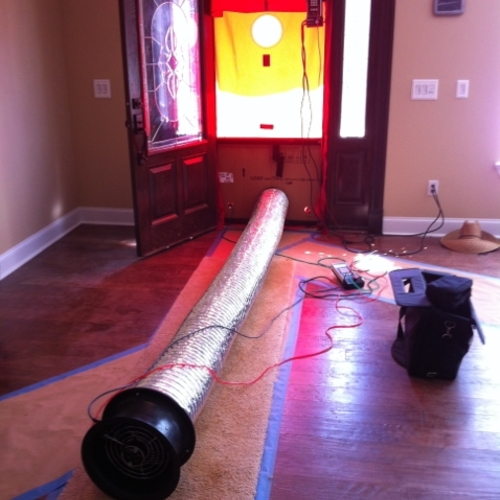
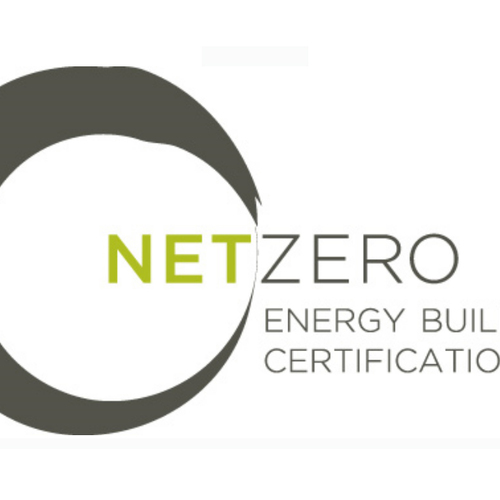
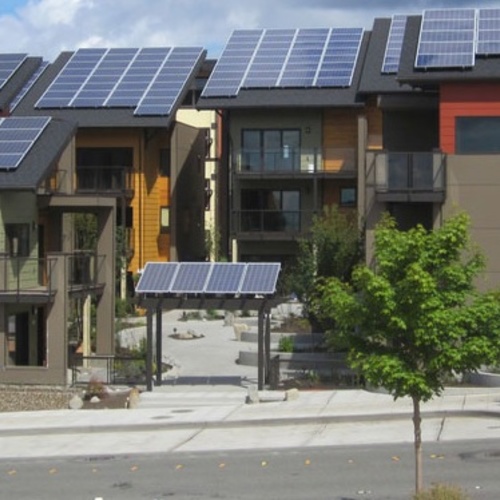






5 Comments
Looks llke a great project
Looks llke a great project for your locale. Your construction costs are amazing compared to my area.
aj
Insulated Stone
Dress it up with a little R-11 insulated stone from InsulStone with its enhanced rainscreen to protect the OSB on the SIP! Then you have the perfect system for Seattle!
Insulstone?
Les,
I can't tell from the Insulstone website whether this is real stone or just concrete with food coloring added -- and that's a bad sign, when the website won't provide technical information -- but in either case the result looks ghastly to my eyes.
What I found about insulstone
Known as InsulStone, the product combines the look of stone, using cement and pumice, with dense foam backing that is stapled to home exteriors and used in other applications. The whole concept is masonry on foam. We make a thin piece of masonry that looks like stone, then we adhere it to a piece of foam for strength and insulation quality. It's lightweight and gives us a high R value. It's basically a stone tile.
Construction costs
In response to aj builder above, construction costs were amazing for this area, and probably for any area. Most code-minimum homes cost more to build than this house did. The key was efficient design. Minimize surface area, and you not only minimize heat loss, you also minimize cost. This home came in about 30% below the average new home cost (for similar sized and appointed homes) in the greater Seattle area.
Log in or create an account to post a comment.
Sign up Log in